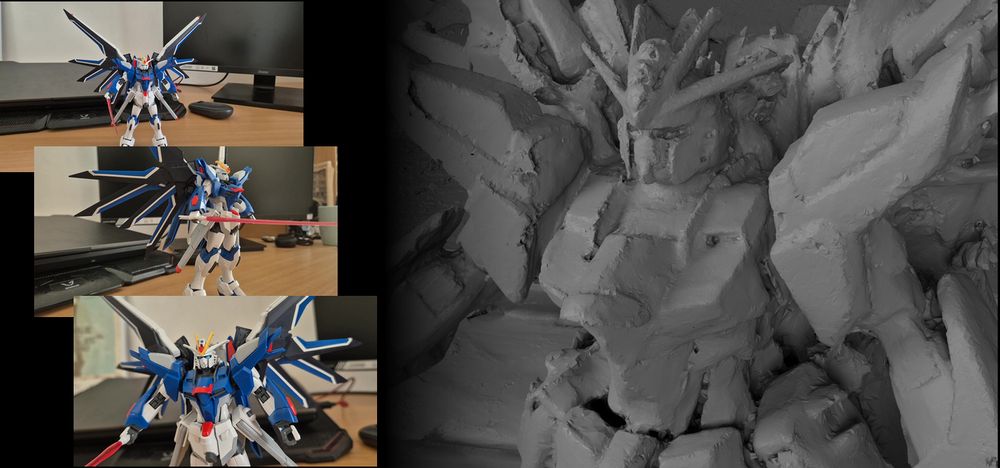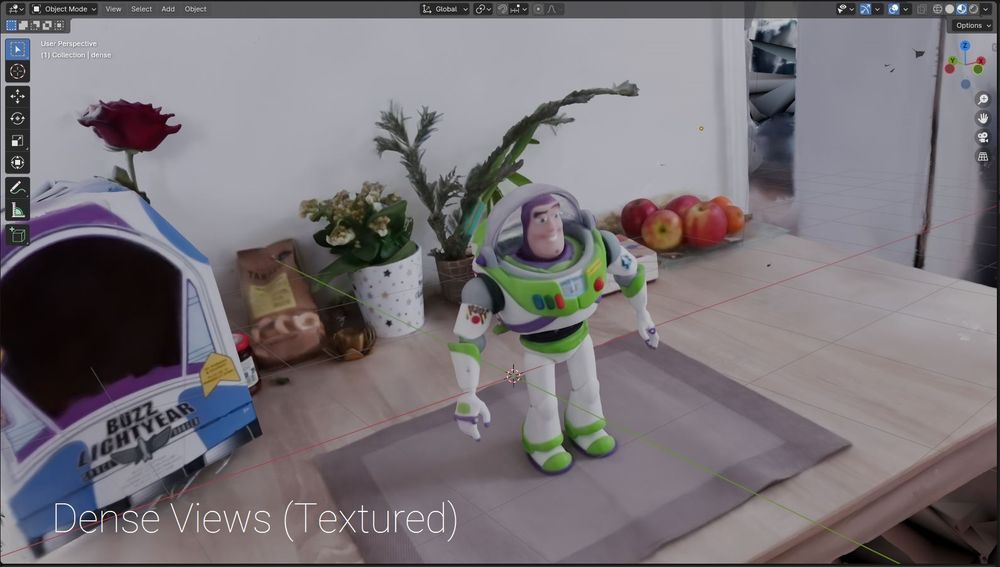
I'm interested in 3D Reconstruction, Radiance Fields, Gaussian splatting, 3D Scene Rendering, 3D Scene Understanding, etc.
Webpage: https://anttwo.github.io/
📄 Paper: arxiv.org/abs/2506.24096
💻 Code: github.com/Anttwo/MILo
🌐 Project Page: anttwo.github.io/milo/
Huge thanks to my amazing co-authors and the supporting institutions! 🙏
📄 Paper: arxiv.org/abs/2506.24096
💻 Code: github.com/Anttwo/MILo
🌐 Project Page: anttwo.github.io/milo/
Huge thanks to my amazing co-authors and the supporting institutions! 🙏
See MILo in action!
Our presentation video showcases the differentiable pipeline and reconstruction results across various scenes.
🔗 YouTube video: www.youtube.com/watch?v=rOBs...

See MILo in action!
Our presentation video showcases the differentiable pipeline and reconstruction results across various scenes.
🔗 YouTube video: www.youtube.com/watch?v=rOBs...
Check out our interactive, online 3D viewer with both mesh and Gaussian representations!
🔗 Gallery: anttwo.github.io/milo/#galler...
Check out our interactive, online 3D viewer with both mesh and Gaussian representations!
🔗 Gallery: anttwo.github.io/milo/#galler...
For even cleaner backgrounds, we propose an optional loss using DepthAnythingV2 that enforces depth ordering consistency.
This drastically improves background geometry quality!



For even cleaner backgrounds, we propose an optional loss using DepthAnythingV2 that enforces depth ordering consistency.
This drastically improves background geometry quality!
Since Gaussians align with the extracted mesh surface, any mesh modification can easily be propagated to the Gaussians!
We include in the code a Blender addon for easy editing and animation - no coding required.


Since Gaussians align with the extracted mesh surface, any mesh modification can easily be propagated to the Gaussians!
We include in the code a Blender addon for easy editing and animation - no coding required.
MILo can be integrated into any Gaussian Splatting pipeline!
We provide simple differentiable functions that take Gaussian parameters as input and return meshes.
Perfect for adding differentiable surface processing to your 3DGS projects!
MILo can be integrated into any Gaussian Splatting pipeline!
We provide simple differentiable functions that take Gaussian parameters as input and return meshes.
Perfect for adding differentiable surface processing to your 3DGS projects!
MILo reconstructs full scenes including all background elements, not just foregrounds.
To achieve this efficiency, we select only surface-likely Gaussians by repurposing the importance sampling from Mini-Splatting2.



MILo reconstructs full scenes including all background elements, not just foregrounds.
To achieve this efficiency, we select only surface-likely Gaussians by repurposing the importance sampling from Mini-Splatting2.
✅ Higher quality meshes with significantly fewer vertices
✅ 60-350MB mesh sizes (vs GBs in other methods)
✅ Complete scene reconstruction (including backgrounds)
✅ Better performance on benchmarks
Efficiency meets quality!

✅ Higher quality meshes with significantly fewer vertices
✅ 60-350MB mesh sizes (vs GBs in other methods)
✅ Complete scene reconstruction (including backgrounds)
✅ Better performance on benchmarks
Efficiency meets quality!
1️⃣ Each Gaussian spawns pivots
2️⃣ Delaunay triangulation connects pivots
3️⃣ SDF values assigned to pivots
4️⃣ Differentiable Marching Tetrahedra extracts mesh
The pipeline is differentiable, enabling mesh supervision to improve Gaussian configurations!

1️⃣ Each Gaussian spawns pivots
2️⃣ Delaunay triangulation connects pivots
3️⃣ SDF values assigned to pivots
4️⃣ Differentiable Marching Tetrahedra extracts mesh
The pipeline is differentiable, enabling mesh supervision to improve Gaussian configurations!
Unlike previous methods, MILo extracts vertex locations and connectivity purely from Gaussian parameters, allowing gradient flow from mesh back to Gaussians. This creates a powerful feedback loop!


Unlike previous methods, MILo extracts vertex locations and connectivity purely from Gaussian parameters, allowing gradient flow from mesh back to Gaussians. This creates a powerful feedback loop!
🍵 MAtCha Gaussians: Atlas of Charts for High-Quality Geometry and Photorealism From Sparse Views
@antoine-guedon.bsky.social @kyotovision.bsky.social
📄 pdf: arxiv.org/abs/2412.06767
🌐 webpage: anttwo.github.io/matcha/

🍵 MAtCha Gaussians: Atlas of Charts for High-Quality Geometry and Photorealism From Sparse Views
@antoine-guedon.bsky.social @kyotovision.bsky.social
📄 pdf: arxiv.org/abs/2412.06767
🌐 webpage: anttwo.github.io/matcha/
anttwo.github.io/frosting/
anttwo.github.io/frosting/
1. MASt3R-SfM is so good, it's crazy... I love it.
2. The regularization we introduce seems to really help the representation to stabilize, even though the constraints are very sparse
1. MASt3R-SfM is so good, it's crazy... I love it.
2. The regularization we introduce seems to really help the representation to stabilize, even though the constraints are very sparse
And actually MASt3R-SfM does the tougher part of the job, clearly 😁
I just meant that both can be used in a unified pipeline for getting sharp meshes from unposed images.
And actually MASt3R-SfM does the tougher part of the job, clearly 😁
I just meant that both can be used in a unified pipeline for getting sharp meshes from unposed images.
🌐Website: anttwo.github.io/matcha/
💻Code: github.com/Anttwo/MAtCha
🌐Website: anttwo.github.io/matcha/
💻Code: github.com/Anttwo/MAtCha
The depth maps can be multi-view inconsistent, no problem!
MAtCha still gets smooth, detailed background while preserving foreground details.
The depth maps can be multi-view inconsistent, no problem!
MAtCha still gets smooth, detailed background while preserving foreground details.
It properly handles both foreground and background geometry while being lightweight if needed (only 150-350MB).
No post-processing mesh decimation is required!
It properly handles both foreground and background geometry while being lightweight if needed (only 150-350MB).
No post-processing mesh decimation is required!
No more choosing between sparse or dense methods!




No more choosing between sparse or dense methods!
💡Our key idea: model scene geometry as an Atlas of Charts and refine it with 2D Gaussian surfels.




💡Our key idea: model scene geometry as an Atlas of Charts and refine it with 2D Gaussian surfels.

